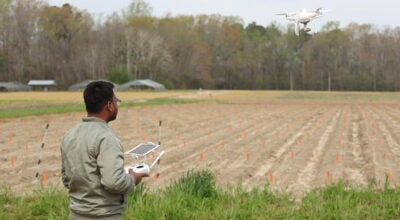Record highs likely
Published 8:35 pm Friday, July 23, 2010
Friday morning, the National Weather Service issued a heat advisory in response to high temperatures and high humidity, but the weather exceeded even those expectations.
The heat index, originally forecast to be between 105 and 109 degrees, soared to 115 degrees, according to the Suffolk Executive Airport’s weather station records. Isolated thunderstorms in the area gave some folks relief from the temperatures, but the heat isn’t expected to lift anytime soon.
“There’s a large high pressure area over the entire east coast,” National Weather Service meteorologist Rick Curry said. “We’re expecting the 100-degree mark to be met through Sunday, at which point we could see a cold front come in and provide a few degrees of relief.”
Until then, Suffolk could see record highs today and Sunday with high temperatures forecast by the National Weather Service to be 101 degrees, without the heat index, both days.
The heat index is based on a formula that includes the temperature and dew point. When the heat index reaches 105 degree or more, a heat advisory is issued.
On Friday, the temperature reached 100 degrees with 79-degree dew point.
A dew point of more than 72 degrees is considered tropical, “and we were far over that,” Suffolk Airport manager Kent Marshall said. “That’s pretty bad.”
Official historical data is not available for Suffolk through the National Weather Service, but according to The Weather Channel, the record high temperature for Friday, July 23 is 101 degrees recorded in 1952. The record high for July 24 is 96 degrees, reached in 1972, and the record high for July 25 is 98 degrees, recorded in 2004.
According to The Weather Channel, the average high for all three days is 88 degrees.
Even Friday’s thunderstorms failed to provide substantial relief from the hot, dry conditions, NWS meteorologist Brian Hurley said.
“The rain is common with the high temperatures and high humidity, because of the instability it creates,” Hurley said. “There will be some pockets of areas that get rain, but nothing substantial. Most the rain will be in North Carolina, where they might get one to two-and-a-half inches of rain, but Suffolk and Chesapeake will probably only get up to three-quarters of an inch, if that.”
In light of the weather and heat advisory that was issued, officials reminded people to stay hydrated and minimize time in the sun, but PETA also reminds people to watch out for their pets and offered the following tips:
– Keep dogs inside: Unlike humans, dogs can only sweat through their footpads and cool themselves by panting. Soaring temperatures can cause heat stress and be physically damaging or fatal.
– Water and shade: If dogs must be left outside, they should be supplied with ample water and shade, and the shifting sun needs to be taken into account.
– Walk, don’t run: In very hot, humid weather, never exercise dogs by cycling while they try to keep up or by running them while you jog. Dogs will collapse before giving up, at which point it may be too late to save them.
– Avoid parked cars: Never leave a dog in a parked car in warm weather, even for short periods with the windows slightly open. Dogs trapped inside parked cars can succumb to heatstroke within minutes — even if the car isn’t parked in direct sunlight.
– Hot pavement: Dogs’ footpads easily burn on heated asphalt, pavement, and sand. Test the road surface with your hand before walking a dog while the sun is out.
– Pickups: Never transport dogs in the bed of a pickup truck. This practice is dangerous because animals can catapult out of the truck bed on a sudden stop or choke if they jump out while they’re tied up. During hot weather, dogs’ feet and bellies also can get burned on the metal.
– Stay alert and save a life: Keep an eye on all outdoor dogs. Make sure that they have adequate water and shelter. If you see a dog in distress, contact humane authorities right away and give the dog immediate relief by providing water.






